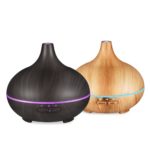Seems everyone is looking for a bit of calm these days: meditation apps are flying out of the ITunes Store, yoga classes are full, and mindfulness training is enjoying celebrity status in the corporate world. It’s no surprize then that this holistic outreach for well-being would see the (happy) emergence of aromatherapy as a tonic. What’s aromatherapy? It’s the use of essential oils of flowers and other botanicals (barks, resins, herbs, fruits) as vehicles of healing, providing (for starters) that elusive calm but also having their way in terms of healing what ails you from a sore back, insomnia, sluggish digestion, bodily inflammation, among other common complaints. Now before you go, ‘this is woo-woo’ remember that essentials oils go back to umpteen years BC and were the go-to remedies of shaman, physicians, and pharmacists long before big pharm appropriated it. Admittedly, big pharm behind modern healing in many (and often miraculous ways – consider small pox vaccine way back when) in oh so many ways but at its genesis, pharmacology began in nature and used nature’s bounty, curated into a medicine cabinet that was created to holistically (and gently) treat the human body, spirit and emotional being. More than the pleasant olfactory experience, the very frequencies and resonances of essential oils molecules can change your body and its responses.
Everyone knows a bit of sweet orange oil or lavender is pleasant but when you begin to study aromatherapy you also begin to appreciate orange oil might perk waning energies and lavender can disinfect a mosquito bite or soothe a restless sleeper back to Nod. Weight gain? Try a bit of grapefruit oil. Hot flashes? Try a bit of Geranium or Clary Sage. The more you become acquainted with the essential oil palate, the more you can blend them for fragrant mixes that smell divine but are also strategically composed for optimal benefit.
What’s really important to know is that unlike a Pier 1 or Bath and Body fragrant blend (Grandma’s Apple Pie, Home for the Holiday Spice), essential oils are not laboratory concocted of chemicals (for the most part) that replicate ‘homey’ scents we know (unless you are simmering natural orange zest, vanilla beans and cinnamon sticks). There’s nothing man-made in essential oils. To ensure this is the case, buy essential oils from reputable companies to make sure you have a pure product, that is not made of carrier oils and the essential oil itself is from the best possible source. This is cogent in order to reap the positive attributes of these fragrant health aids so make sure you purchase only sanctioned quality.
So what are essential oils? They are steam-distilled oils from nature. They are ‘essential’ because you’re left with the ‘essential’ core, natural chemistry of nature’s curatives
How do you use essential oils? Ah, that’s the rub. You can use them as massage oil (usually essential oils are combined in carrier oils for this purpose) or ‘neat’, i.e. safe-to-consumer essential oils can be taken as a tea or as a tincture (but always check the oil is safe and edible and with your medical practitioner’s counsel). Some people simply add essential oils to their homemade cleaning products or rub a bit of essential oil of their choice on a cold light bulb (so when the lamp is on, the heat warms and wafts the scent).
However one of the most popular methods for essential oil aromatherapy is to use a diffuser.
We tested our essential oils with Victsing Diffusers. https://www.victsing.com/collections/oil-diffuser
There are ultrasonic diffusers which use water to disperse the oil in a fine, even mist, adding a bit of humidity to the air along with gentle scent. There are nebulizer diffusers that don’t use water but instead are atomized directly from the essential oil bottle. There are also heat diffusers that feature a warming base to diffuser the scent. Each option has some pros and cons and depends on your needs. However, despite having to be cleaned once a week or so, I like the Ultrasonic Diffusers and have two Victsing diffusers. I tested a 150 mL model as well as a 300 mL one. I like the smaller one for small bedrooms and use the larger one for larger areas. I also like having two so that one habitually features the comforts of lavender (for the bedroom and meditation use) and the larger one is in the living-room area where I require a large capacity unit. Both can be timed for 1 or 3 hours (the larger unit also goes for 6 hours) continuous fragrance misting. LED lights are subtle and comforting and adds to the calming ambience.
What’s also great about Victsing is their support. Reach out to the company via email or Facebook and they’re their to help. They are also the leading diffuser on Amazon where the five start reviews speak for themselves. “Use great oils’ says the company because a great diffuser won’t be able to do much with inferior oils†They also recommend you use filtered water for optimal performance. For an assortment of Victsing, visit them at http://www.Victsing or  Amazon https://www.amazon.com/dp/B018CLNEOM?aaxitk=8IODbSfBO2-ra6vOoLf3Iw&pd_rd_i=B018CLNEOM&pf_rd_m=ATVPDKIKX0DER&pf_rd_p=5582544217303223519&pf_rd_s=desktop-sx-top-slot&pf_rd_t=301&pf_rd_i=victsing&hsa_cr_id=9980246620601





No comments yet.